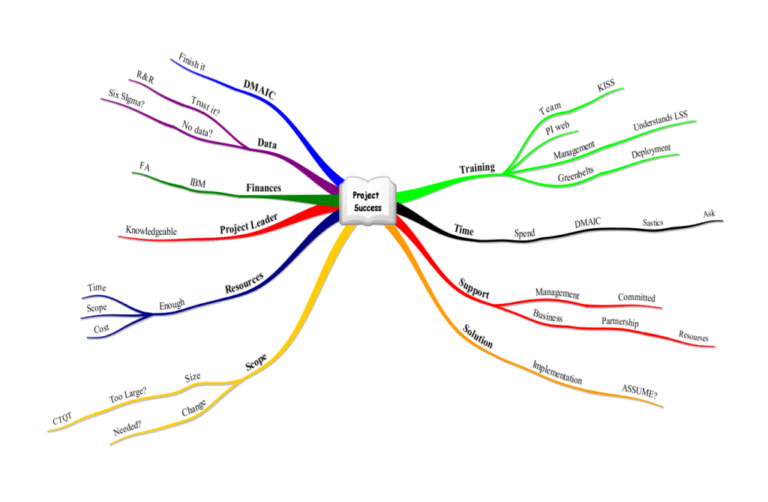How metrics can drive bad behavior?
Abstract:
We all establish once in a year the objectives for our employees in order to improve the overall company results continuously. Therefore metrics are identified which are measured during the year and which tell us how well our employees have been performing.
However how sure are we that the overall company results are really improving when individual objectives are met or exceeded?
Is there any chance metrics are driving bad behavior with an inverse impact on the overall company performance?
Text:
“What gets measured, gets done” (Tom Peters).
It is commonly known that performance needs to be measured in order to understand how well we are doing…. However the challenge is to find the right metrics as metrics can drive bad behavior if they are not defined in a smart way…
Why can metrics drive bad behavior? And what can we do about it?
Let’s have a look to some examples in different areas and then share with you some thoughts.
Production planning: Bob is leading the planning department and is also responsible for local supply chain. He is doing his utmost best to keep inventory low but at the end of each quarter it is quite important to meet the firm set targets. His forecast is telling him he is almost there. An additional effort needs to be made. He knows that there will be some trucks arriving to deliver parts the last day of the quarter. In order to meet his target, he asks the receiving department to hold the trucks for one day. However he does not know that in the meantime lines are short of components and the next day (first day of new quarter) the team leader will need to leave the line to go and gather the parts right after being unloaded from the truck. This additional non value added work is not visible…. but Bob is meeting his inventory target.
Sales department: Marie Ann is a Sales representative and her boss is very much interested in getting new customers. Therefore in her bonus calculation bringing in new customers has more weight than increasing sales at an existing customer. One day it happened an existing customer asked to quote for additional business. Sadly enough this request completely escaped from the attention of Marie Ann as she was at that moment very busy in quoting new business for a new customer. The existing loyal customer decided to go to competition…
Supply chain management: Sam is global supply chain buyer for an international company and is responsible to negotiate new contracts with suppliers. His boss told him he wants to see price reductions year over year for all suppliers. As Sam knows it will be quite hard to meet the targets, he is open to accept a bit higher price at the start of a new project and negotiates a year over year price reduction with the supplier. He does not feel good about that because he remembers that in the past he could start at the right price from the beginning but at least now he is meeting his boss’s objective.
Production department: Nancy wants to understand the performance of the assembly lines she is responsible for. These lines are building several references with different labor content and therefore an efficiency calculation based upon “norm parts” (one reference is taken as base) is created. She is noticing that the performance of the lines is going up but during her shop floor walk she is also observing an increase of built parts around the lines. On top of that the department who is receiving the parts as internal customer is complaining more about parts not delivered on time. After a more deep investigation she found out that people were building more parts of the wrong reference in order to meet the productivity target.
Design engineering department: Graham’s boss who is the head of Engineering is interested to understand how efficient his department is working. He is getting some pressure from his peer of Production who is often making remarks Design Engineering is having too many engineers in comparison with Production and at least in Production efficiency is measured… So Graham’s boss asked him to come up with a good metric to measure the efficiency of the design department. Graham started to measure FOD showing his boss an increasing trend every single month. The boss was happy as he didn’t get any complaints from his peer of Production about the quality of the design work….
But after a while he wondered what FOD was meaning? He was surprised to hear from Graham, FOD was standing for Feed On Desk. Graham wanted to have engineers spending their time in thinking about the design instead of making endless number of drawings of which many iterations because the first design did not work or production was not able to produce…
Shop floor people involvement: Suzy from HR wants to introduce a suggestion program to create better involvement from the shop floor employees and to get the greatest ideas from the people who are closest to the shop floor reality. She starts with the help of Production and Production Engineering a suggestion scheme linked with a financial bonus depending on how big the saving is. After 6 months she was very surprised to see that despite a high number of ideas at the start, the graph of ideas was showing a severe downtrend. She started to speak with the shop floor people and found out ideas that were not usable (=not bringing immediately dollars savings right away) were dropped and the employee who generated the idea felt like he had been “losing” money (for his previous idea he got some money, now he is not getting anything, it is like somebody took his money).
Maintenance department: Dave is leading the maintenance department of an assembly plant of 1000 employees. The plant manager asked each department head to reduce the cost of their department. So therefore Bob has been deep diving into the labor and material cost of his department and he decided to lay off 10% of his people. At first the plant manager was happy but after some months he noticed that the availability of the equipment was deteriorating and whenever there was a technical down time it was taking more time to recover as technicians were not available. So he decided to review with the maintenance manager the organization of the maintenance department.
Back to Tom Peters: “What gets measured, gets done.”
It is clear we need to measure our performance…. But how to define these metrics? And how to read the reported figures?
Some thoughts:
• Do not just trust what is reported on paper. As a leader you need to understand what is behind the figures. Is there any better way then Go& See on the Gemba? When doing this you will understand the full story.
• Do understand the value streams in your company and define metrics that that are related to the full value stream. All people working in this value stream will have the same goals and objectives measured in the same way.
• Take care that the metrics you are choosing are not contradicting to each other. Identify which metrics are primary and which secondary. The primary can be used to define goals and objectives while the secondary are tracked in order to be sure we are not making the wrong decisions.
• Do not want to measure everything: OEE (Overall Equipment Efficiency) measured on every single piece of equipment is not making a lot of sense. It requires a lot of data gathering and analyses while it is bringing only value for critical machine and bottleneck equipment in order to understand where the improvement opportunities are.
• When you have defined your metric do not go into the details for data gathering.
I have been once in a situation where the quality team was very proud to show me a report from a complex database on rework and reject of a particular line. This data was gathered on a daily base by the team leader on a piece of paper who handed it over to an office clerk to enter it into the database. Later the quality engineer loaded the data into minitab (statistical software) to generate an extensive report. The pareto graphs in this report told us that machine 5 in the line (there were in total 5 machines) which was a final 100% check, was showing a high rework & reject rate for a particular failure code and failure position (where on the part the problem appeared). There were in total more than 1000 failure codes and failure positions identified for this company.
As I was impressed about the report, I went to the shop floor and visited the particular line. I asked the team leader to tell me what his number one problem was in this line and he pointed me to machine 2 which was semi-automated arc welding machine. It was producing a lot of bad welds and the team leader showed me that the clamps holding the parts that needed to be welded were having some backlash and therefore were not able to hold the parts tight when welding….
I visited the line another two times and got from these team leaders the same answer…..
So in total it took me 15 minutes to find out what the problem number one was of this line and on top of it, I got the root cause for free and a solution (just replacing the worn out clamps).
This is showing that yes indeed you need to have a metric to understand which line is having most rejects and rework only because then you can go to the most critical line that needs more attention and do a more detailed investigation (by speaking to the people involved).
It does not make sense to enter all details of all lines into a database…..
Conclusion:
There is nothing wrong with identifying metrics to measure our employees but we need to be aware metrics can drive bad behavior if they are not defined in a smart way and if they are not reviewed together with regular Gemba visits.
By Christine Wouters

Christine Wouters is an engineer and has been working for more than 25 years in the automotive sector. She started as process engineer, moved to quality engineering, became responsible for European Manufacturing Engineering managing investment budgets and plant layouts and found there the seed to really understand flow and lean. The next ten years were focused on bringing lean thinking not only for manufacturing processes but also for business processes.
As she is passionate to share and apply her knowledge on lean and continuous improvement with companies from different environments, she decided to become a lean consultant and founded the company Lean4Growth.
You are welcome to contact her at christine.wouters@lean4growth.be or +32 476 520 769.






